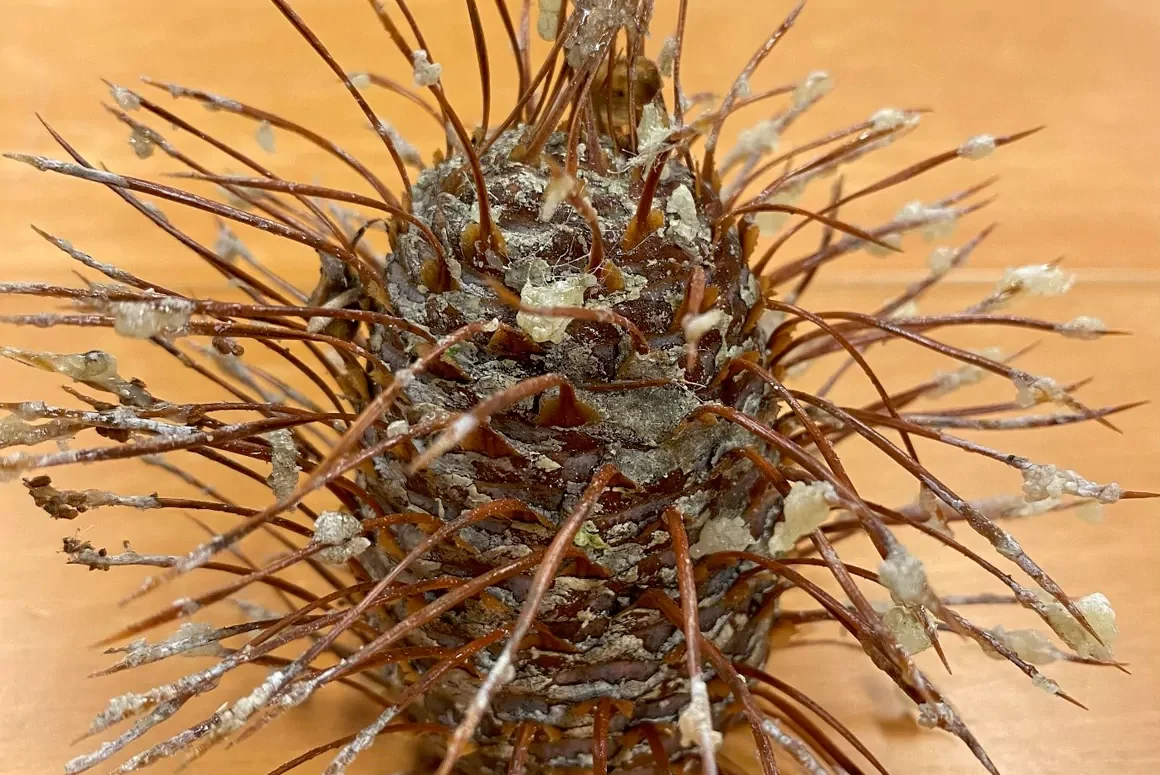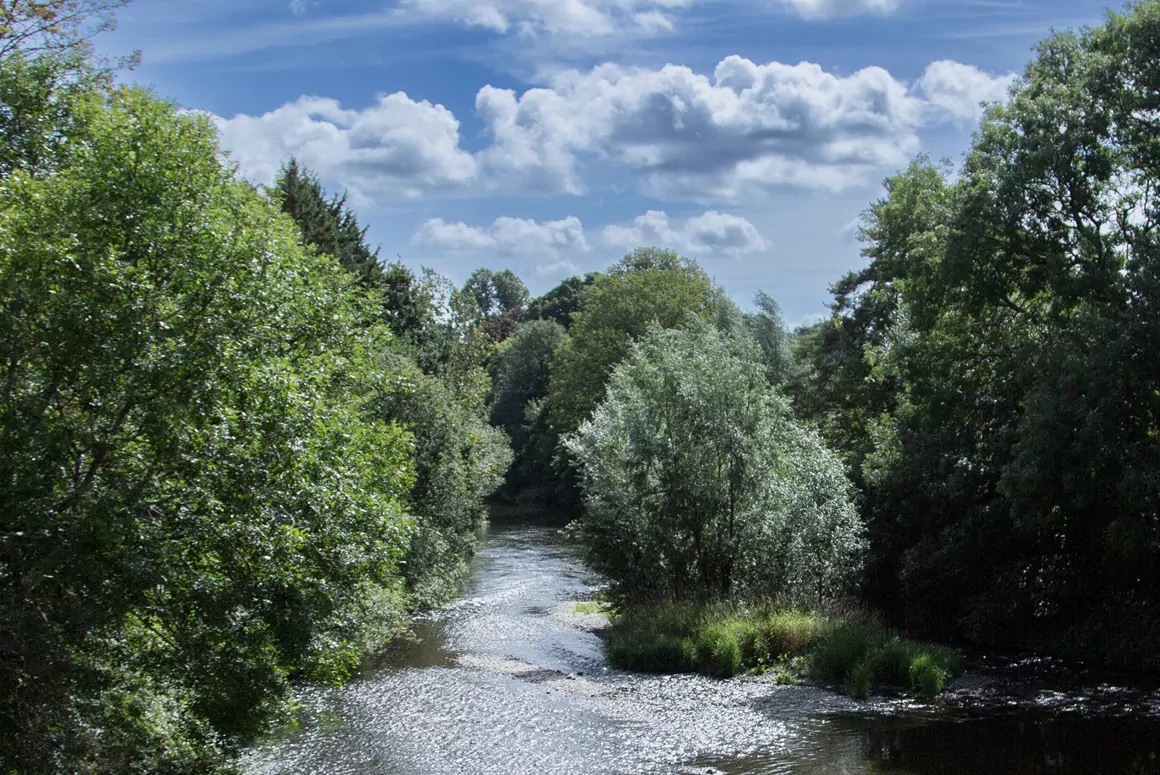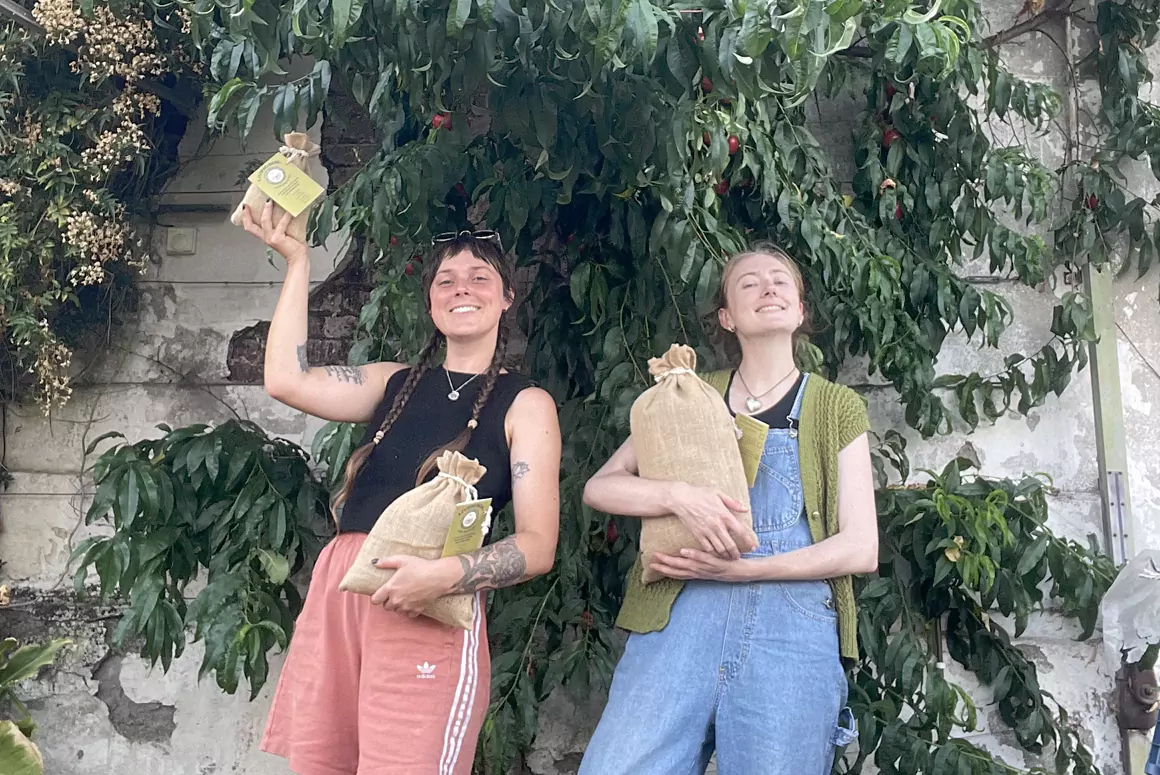One of the worlds rarest and most endangered species of Fir Tree has “coned” for the first time in decades at a garden attraction in the Welsh Marches.
Hergest Croft Gardens in Kington, is a 70 acre estate of horticultural importance within the UK and is host to over 130 “Champion Trees”, 5,000 rare trees, plants and shrubs together with the National collections of Maples, Birches and Zelkovas. The last recorded time that an older specimen of this tree produced a cone was in the early 60’s.
The “Abies Bracteata” or Santa Lucia/Bristlecone Fir(1) is a native of Monterey, California where its natural habitat is less than a 30 square km area and is regarded as an endangered species. Whilst there are several other trees of this species growing in selected gardens in the UK, a “coning” is a very rare experience.
The exciting discovery was made just before Christmas when the huge tree was undergoing routine maintenance by Herefordshire based Tree Surgeons, Abortech.
“We are absolutely thrilled and very excited about this event” said Austyn Hallworth, Head of Marketing & PR for Hergest Croft Gardens.
“This discovery is so horticulturally important and crucial for its survival outside of North America, that we have sent seeds to specific centres throughout the UK and Europe in an effort to propagate and cultivate for the future” he said.
Abies bracteata, the Santa Lucia Fir or Bristlecone Fir, is the rare fir from North America, where it is generally confined to steep-sided slopes and the bottoms of rocky canyons in the Santa Lucia Mountains, in the Big Sur region on the central coast of California, United States.
The species may have had a broader range in the Ice Age era, rendering it a possible paleoendemic, although some scientists say no fossil evidence of the tree has been conclusively identified. The tree is now confined, possibly due to long-term climatic changes, to a few, small locales that mimic those of the distant past.
The tree though is a popular ornamental and is found in many arboreta of which you could class Hergest Craft Gardens as one. It can grow in an equable Mediterranean climate with considerable precipitation during the winter and very dry summers, which with Climate Change brings the Welsh Marches into this category.
The fir can grow to 66 to 115 feet (20 to 35 m) tall tree, having a slender, spire-like form. The thin bark is reddish-brown with wrinkles, lines and resin vesicles (‘blisters’). The branches are downswept. The needle-like leaves are arranged spirally on the shoot, but twisted at the base to spread either side of the shoot in two moderately forward-pointing ranks with a ‘v’ gap above the shoot. The leaves are hard and stiff with a sharply pointed tip, 3.5–6 cm long and 2.5–3 mm broad, with two bright white stomatal bands on the underside. The flowers bloom in early May, and the ovoid, 6–9 cm long (to 12 cm including the bracts) cones mature and release winged seeds from late August to October. The cones differ from other firs in that the bracts end in very long, spreading, yellow-brown bristles 3–5 cm long. The male (pollen) cones are 2 cm long, shedding pollen in spring.
Visit: www.hergest.co.uk





